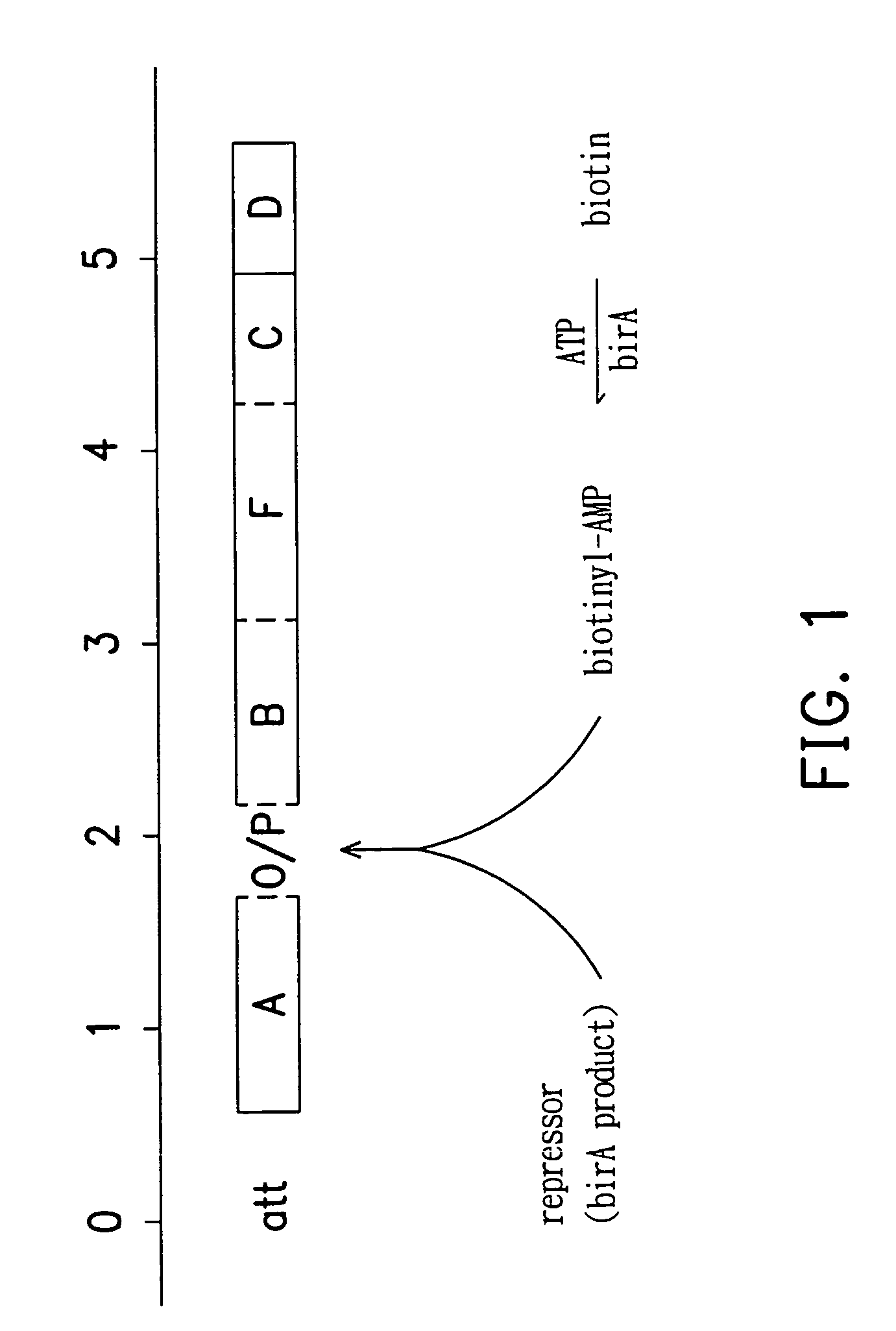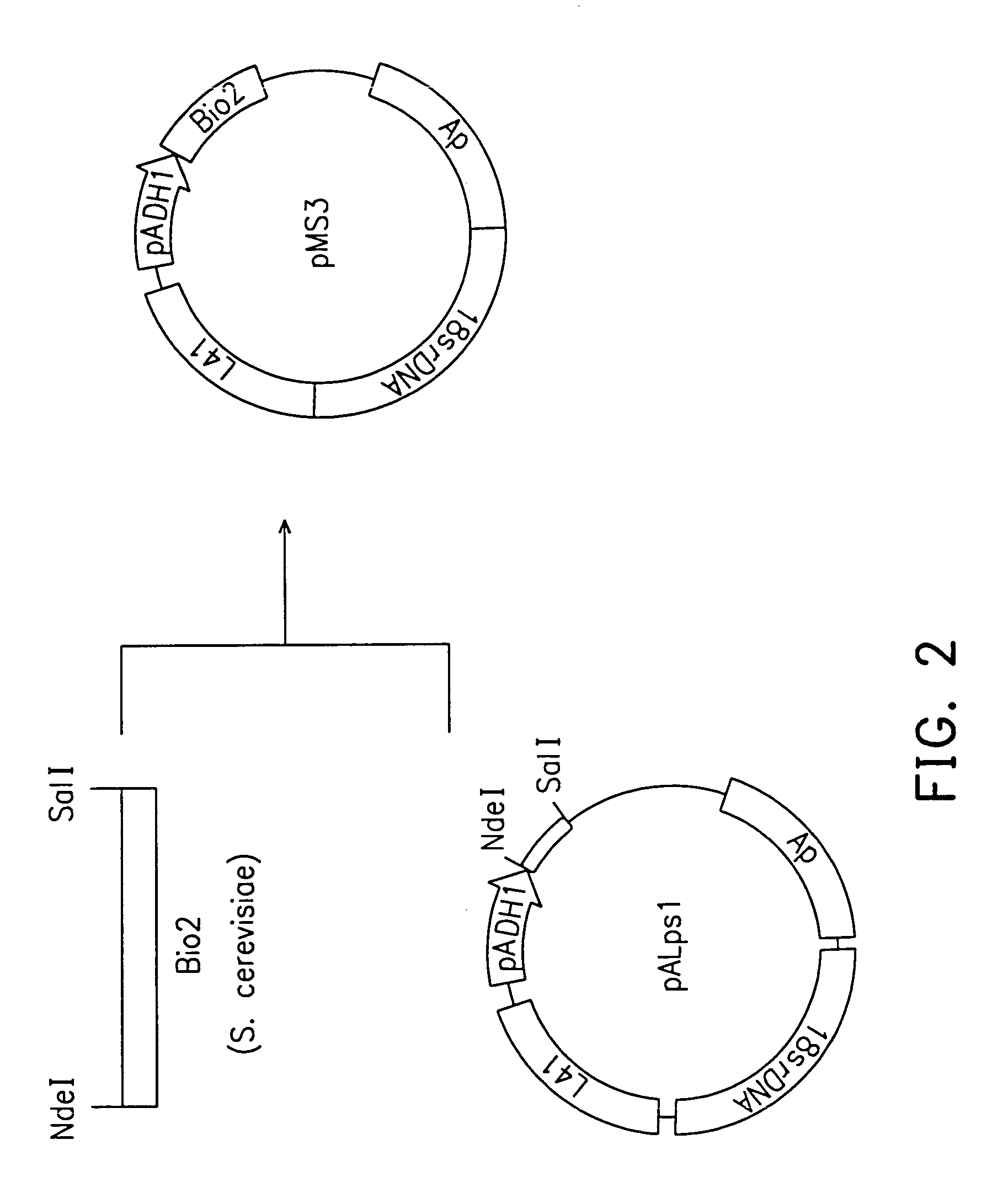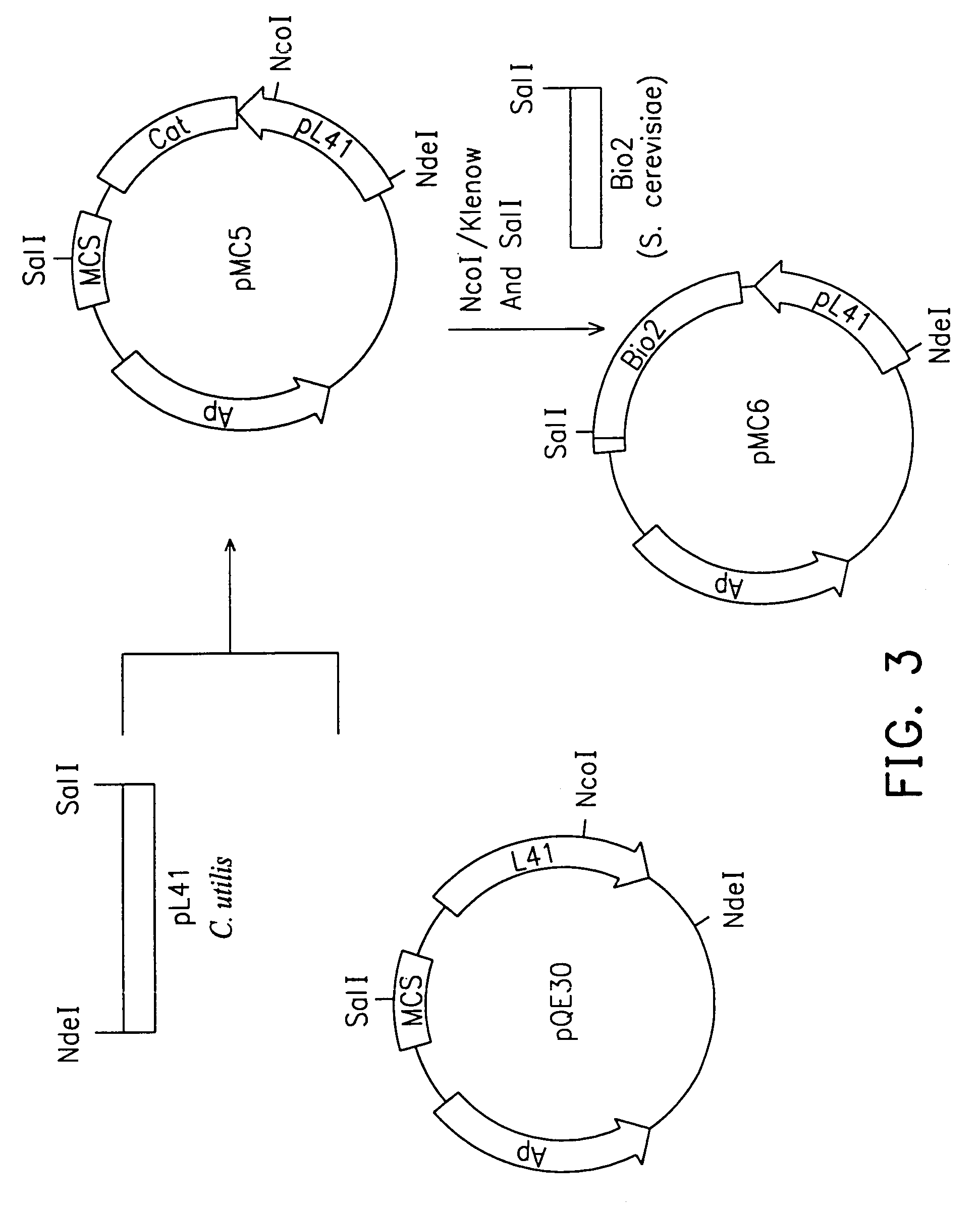Methods for preparing yeast with improved biotin productivity using integrating plasmids encoding biotin synthase
a biotin synthase and plasmid technology, applied in the field of biotin expression using edible yeast, can solve the problems of biotin association, severe consequence, and the inability of cerevisae /i>to produce biotin from simple carbon sourc, and achieve the effect of high biotin-productivity
- Summary
- Abstract
- Description
- Claims
- Application Information
AI Technical Summary
Benefits of technology
Problems solved by technology
Method used
Image
Examples
example
Example 1
Cloning of S. cerevisae BIO2 Gene
[0037]The primers containing S all site for cloning were designed according to the BIO2 gene sequence of the S. cerevisae Y266 strain as follows as SEQ ID NO: 2 and SEQ ID NO: 3, respectively:
[0038]
Forward: 5′-GAAAGTCGACTCAAGATCTGTCGTACTTAA-3′; andReverse: 5′CCGCAGTTAAATCG′ACAACTG′-3′.
The DNA fragments of the BIO2 gene were amplified by polymerase chain reaction (PCR).
example 2
Cloning and Sequencing of C. utilis BIO2 Gene
[0039]Two conservative amino acid sequence regions were obtained when compared to the biotin synthase gene of five microorganisms belonging to S. cerevisae, E. coli, and Erwinia herbicola. The degenerate primers were designed according to these conservative regions as follows as SEQ ID NO: 4 and SEQ ID NO: 5, respectively:
[0040]
Forward:5′-TGTNCNGARGAYTGYAANTATTG-3′;Reverse:5′-GTRTCNANRTTRTG′GTTGTA-3′,
wherein Y=T+C, and R=A+G′. About 0.3 kb of DNA fragment was obtained from C. utilis genome by PCR. This DNA fragment was used as a probe for screening the complementary sequences from C. utilis genomic library prepared by the inventor (using lambda EMBL3 as a vector).
[0041]The cloned C. utilis biotin synthase gene (GenBank Accession Number AF212161) was sequenced and the nucleotide sequence thereof was as follows (SEQ ID NO: 1):
[0042]
atgtcgtttatattgactgctattagtcgtccgattgctctttccacttctagagtagcttctagggctactctggcaacaggtgctactgctgctgcggagatcttgga...
example 3
Insertion of C. utilis BIO2 Gene into E. coli Expression Vector pQE30
[0043]The plasmid pMCC11 and vector pQE30 were digested with NcoI and BamHI, respectively. After digestion, both pMCC11 and vector were end-repaired into blunt ends by Klenow DNA polymerase, followed by SalI digestion. The NcoI / Klenow-SalI fragment of pMCC11 (i.e. BIO2 gene) was integrated into the BamHI / Klenow-SalI site in pQE30 to obtain plasmid pMCC-E13 (FIG. 7). The C. utilis BIO2 gene was then expressed in the manner of in-frame fusion by E. coli pTac promoter.
PUM
| Property | Measurement | Unit |
|---|---|---|
| resistance | aaaaa | aaaaa |
| structures | aaaaa | aaaaa |
| purity | aaaaa | aaaaa |
Abstract
Description
Claims
Application Information
 Login to View More
Login to View More - R&D
- Intellectual Property
- Life Sciences
- Materials
- Tech Scout
- Unparalleled Data Quality
- Higher Quality Content
- 60% Fewer Hallucinations
Browse by: Latest US Patents, China's latest patents, Technical Efficacy Thesaurus, Application Domain, Technology Topic, Popular Technical Reports.
© 2025 PatSnap. All rights reserved.Legal|Privacy policy|Modern Slavery Act Transparency Statement|Sitemap|About US| Contact US: help@patsnap.com



